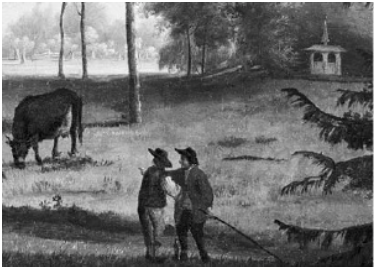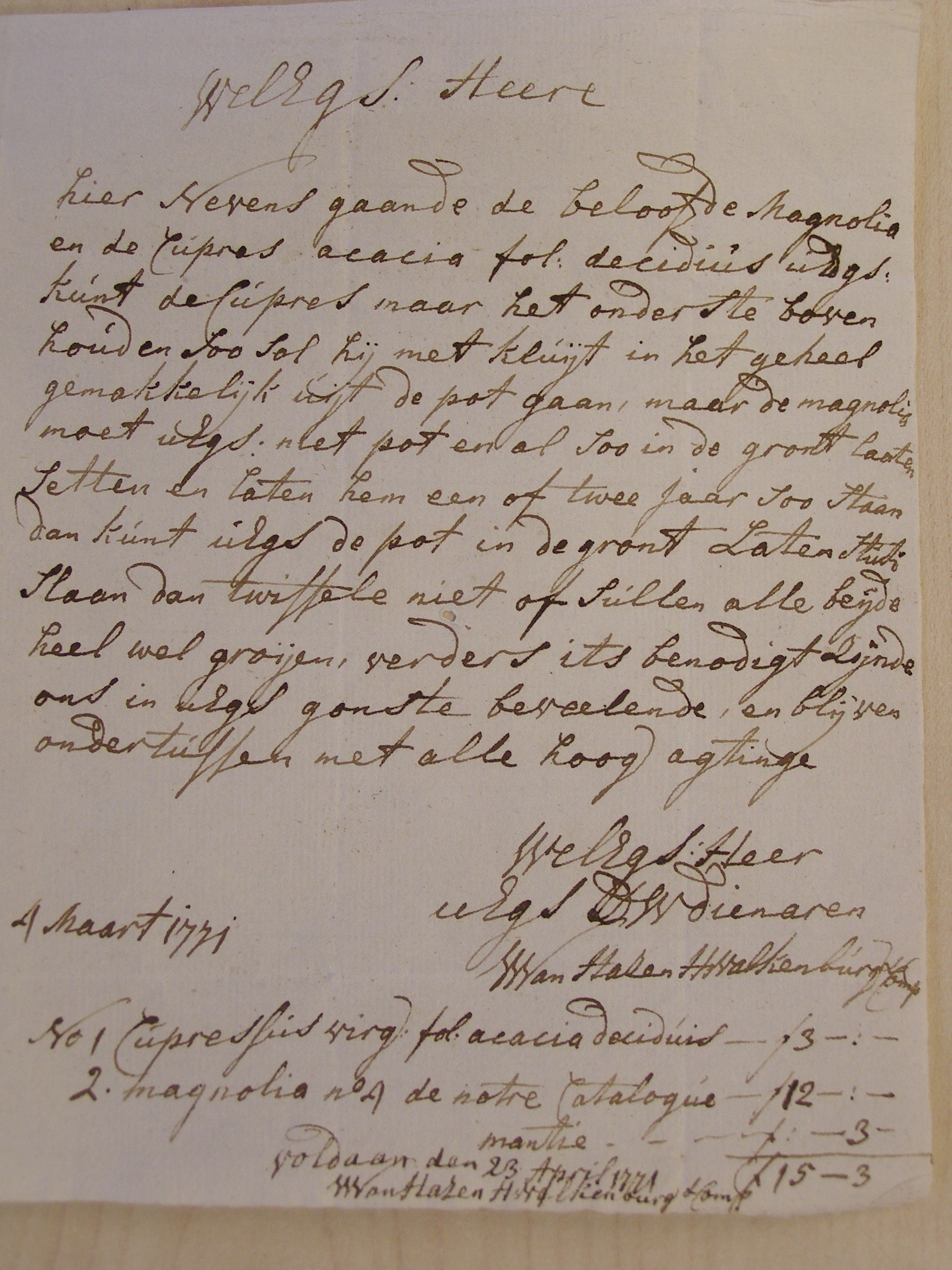Huys ten Donck’s huisje van Wilhelm Tell gedateerd

At Huys ten Donck, the building date of a now lost garden pavilion resembling Wilhelm Tell’s ‘kapelle’ on the rocky shores of the Vierwaldstättersee in Switzerland, was unknown. The estimate was that it was built circa 1800, although the layout of the garden it sat in, is known to have taken place in 1792.
One document in the house archive -a hand written version of the legend of Wilhelm Tell- mentions that this pavilion had just been built. This document is dated 29 September 1792. Earlier that year, a carpenter was paid ƒ219,- for his work on the ‘Capelleke Buyten’.
Both documents confirm that the pavilion was built simultaneously with the creation of this new layout of the garden (the ‘nieuwe werk’).
At Huys ten Donck, the building date of a now lost garden pavilion resembling Wilhelm Tell’s ‘kapelle’ on the rocky shores of the Vierwaldstättersee in Switzerland, was unknown. The estimate was that it was built circa 1800, although the layout of the garden it sat in, is known to have taken place in 1792.
One document in the house archive -a hand written version of the legend of Wilhelm Tell- mentions that this pavilion had just been built. This document is dated 29 September 1792. Earlier that year, a carpenter was paid ƒ219,- for his work on the ‘Capelleke Buyten’.
Both documents confirm that the pavilion was built simultaneously with the creation of this new layout of the garden (the ‘nieuwe werk’).



